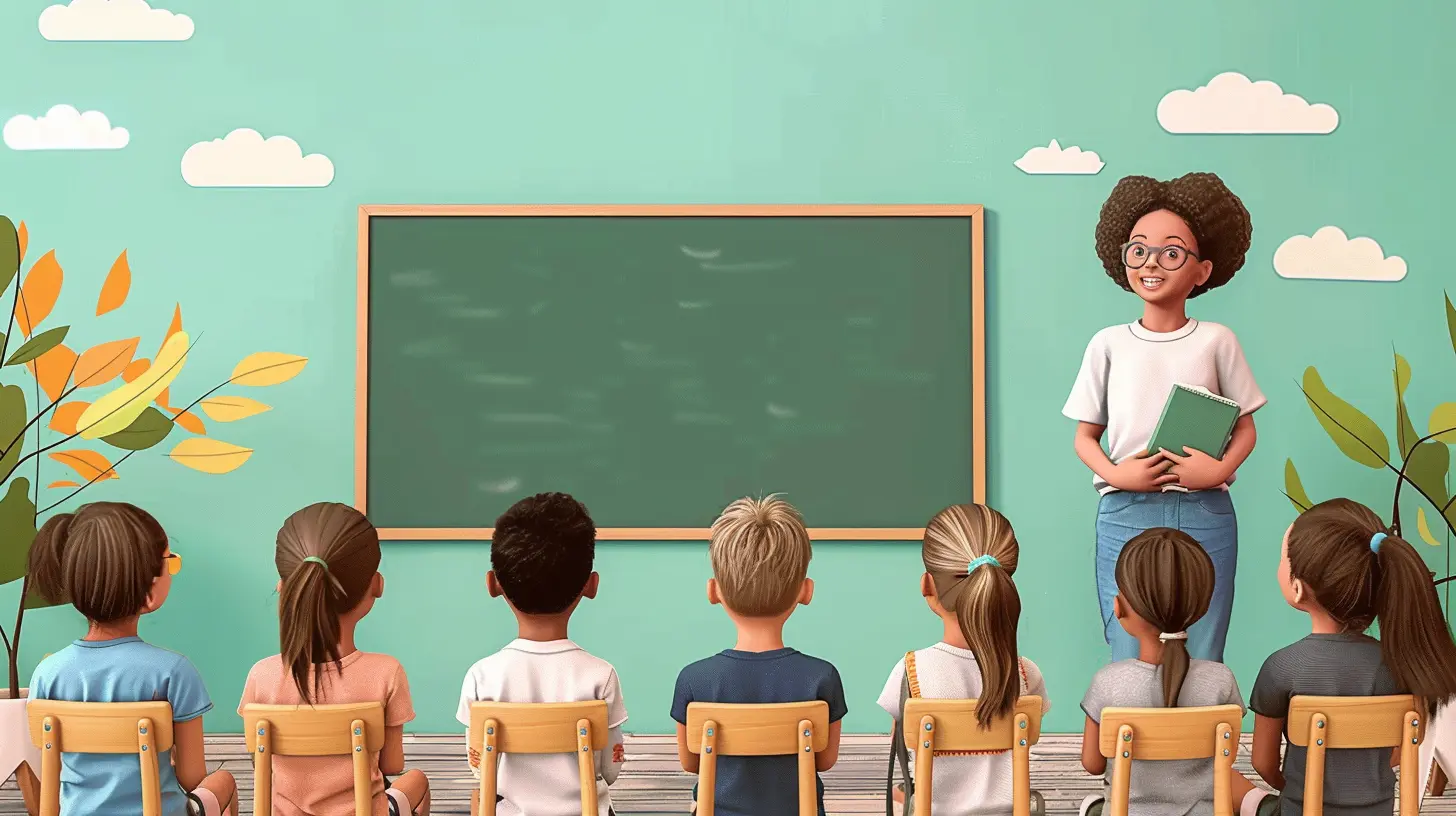Common Classroom Management Pitfalls and How to Avoid Them
28 May 2025
Classroom management is a beast. No matter how much experience you have as a teacher, there are always challenges lurking around the corner. Whether it’s handling disruptive students, keeping the class engaged, or simply maintaining order, one wrong move can throw your entire lesson off track.
But here’s the good news: many of these issues are avoidable. The key is recognizing the pitfalls before you fall into them and knowing how to steer clear. So, let’s break down the most common classroom management mistakes and, most importantly, how to fix them. 
1. Lack of Clear Expectations
If students don’t know the rules, how can you expect them to follow them? One of the biggest mistakes teachers make is assuming that students automatically understand classroom expectations.How to Avoid It:
- Be crystal clear about what you expect from day one.- Establish a set of rules together with your students—it gives them a sense of ownership.
- Post the rules somewhere visible and reinforce them often.
- Use positive reinforcement when students adhere to expectations.
Without clear boundaries, you’re handing control over to chaos. 
2. Inconsistency in Discipline
One day, you let something slide. The next, you crack down hard. Guess what? Your students notice. Inconsistency breeds confusion and frustration, making it nearly impossible to maintain order.How to Avoid It:
- Set fair consequences and stick to them.- Avoid making exceptions unless absolutely necessary—kids pick up on favoritism instantly.
- Don’t make empty threats. If you say there’s a consequence, follow through.
- Keep your emotions in check—discipline should be about behavior, not personal feelings.
When your students know what to expect, they’re less likely to test the boundaries. 
3. Over-Reliance on Punishment
If your go-to response to misbehavior is punishment, you’re doing it wrong. Constantly punishing students creates a toxic environment rather than fostering respect and cooperation.How to Avoid It:
- Focus on positive reinforcement—reward good behavior instead of always cracking down on bad.- Use logical consequences instead of vague punishments. For example, if a student misuses class materials, have them take responsibility rather than just sending them to detention.
- Build relationships with your students—they’re more likely to behave for a teacher they respect.
Remember, good behavior should be encouraged, not just enforced. 
4. Ignoring Small Disruptions
That little side conversation in the back of the room? The kid tapping his pencil non-stop? If you ignore these, they will escalate. Small disruptions often snowball into major distractions.How to Avoid It:
- Address minor issues immediately and subtly—a simple glance or a name drop can work wonders.- Redirect behavior before it turns into a full-blown disturbance.
- Use proximity control—sometimes just standing near a student is enough to refocus them.
- Build a classroom culture where students understand that minor disruptions affect everyone.
A well-managed class doesn’t wait for problems to explode—it prevents them from happening in the first place.
5. Talking Too Much
Ever caught your students zoning out while you’re in the middle of an important explanation? It happens when you talk more than you teach.How to Avoid It:
- Keep your instructions short and to the point.- Use visuals, demonstrations, and hands-on activities to keep students engaged.
- Involve students in the discussion rather than just lecturing at them.
- Use wait time—ask a question and give students time to think before answering.
Classrooms thrive when students are engaged, not just passively listening.
6. Lack of Student Engagement
If your students aren’t engaged, they will find a way to entertain themselves—usually at your expense. A boring lesson leads straight to off-task behavior.How to Avoid It:
- Make lessons interactive—incorporate games, discussions, and real-world connections.- Use student interests to shape your teaching. The more relevant the material, the more engaged they’ll be.
- Give students a choice in their learning—when they feel involved, they take more ownership.
- Mix things up! Change your tone, pace, and activities to prevent monotony.
An engaged classroom is an easier classroom to manage.
7. Poor Transitions Between Activities
Nothing creates chaos faster than a sloppy transition. If students don’t know what to do between activities, they’ll fill the time with their own (usually disruptive) ideas.How to Avoid It:
- Plan transitions—don’t just assume students will know what to do next.- Use signals (like clapping or countdowns) to grab attention quickly.
- Keep materials organized and accessible to avoid long wait times.
- Give clear, simple instructions before transitioning.
A smooth transition keeps the momentum going without unnecessary distractions.
8. Not Building Relationships with Students
Students don’t just respect teachers who enforce rules—they respect teachers who respect them. If you don’t take time to build relationships, classroom management becomes a battle rather than a partnership.How to Avoid It:
- Get to know your students—ask about their interests, hobbies, and struggles.- Show genuine empathy—a little understanding goes a long way.
- Be approachable—students should feel comfortable coming to you.
- Use humor and positivity—the best classrooms have an atmosphere of mutual respect.
A well-managed classroom starts with strong teacher-student connections.
9. Not Being Prepared
Winging it never works. Walking into class without a solid plan is an open invitation for disaster.How to Avoid It:
- Always have a clear lesson plan with backup activities—because things rarely go exactly as planned.- Set up your materials before class starts to avoid downtime.
- Anticipate potential problems and have a strategy for dealing with them.
When you’re prepared, you exude confidence—and students pick up on that.
10. Losing Control of Emotions
Let’s be real: teaching can be frustrating. But losing your cool in front of students is one of the fastest ways to lose their respect.How to Avoid It:
- Take deep breaths before reacting—impulse responses often make things worse.- Use non-verbal cues to manage behavior instead of raising your voice.
- Have a classroom management plan so you’re not relying on emotions to dictate your response.
- Remember, it’s not personal—even when it feels like it is.
A calm, collected teacher commands far more respect than one who frequently snaps.
Final Thoughts
Managing a classroom isn’t easy, but it’s not impossible either. The key is recognizing your mistakes and making adjustments before they turn into serious problems.By setting clear expectations, staying consistent, engaging students, and keeping your cool, you can create a classroom environment where students want to learn—and where you actually enjoy teaching.
So, the next time you feel like your classroom is slipping into chaos, take a step back and ask yourself: Am I falling into one of these common traps? If so, now you know exactly how to fix it.
all images in this post were generated using AI tools
Category:
Classroom ManagementAuthor:

Eva Barker
Discussion
rate this article
3 comments
Karly Sheppard
Ah, yes, classroom management pitfall avoidance! Because who wouldn’t want to master the art of keeping 30 mini tornadoes in check? Sign me up for the next workshop!
June 19, 2025 at 3:21 AM

Eva Barker
Thanks for your humorous take! Mastering classroom management can definitely feel like taming mini tornadoes, but with the right strategies, it’s achievable. Hope you find the tips helpful!
Zaylee McGuire
This article offers valuable insights into common classroom management challenges. The practical strategies provided can greatly enhance teaching effectiveness and student engagement. A must-read for educators aiming to improve their classroom environment!
June 6, 2025 at 12:20 PM

Eva Barker
Thank you for your kind words! I'm glad you found the insights and strategies helpful for enhancing classroom management.
Wyatt Scott
Effective classroom management is crucial for student success. By proactively addressing common pitfalls and implementing proven strategies, educators can create a positive learning environment that fosters engagement and growth.
May 30, 2025 at 2:57 AM

Eva Barker
Thank you for your insightful comment! I completely agree—effective classroom management is key to fostering a positive learning environment and enhancing student engagement.



